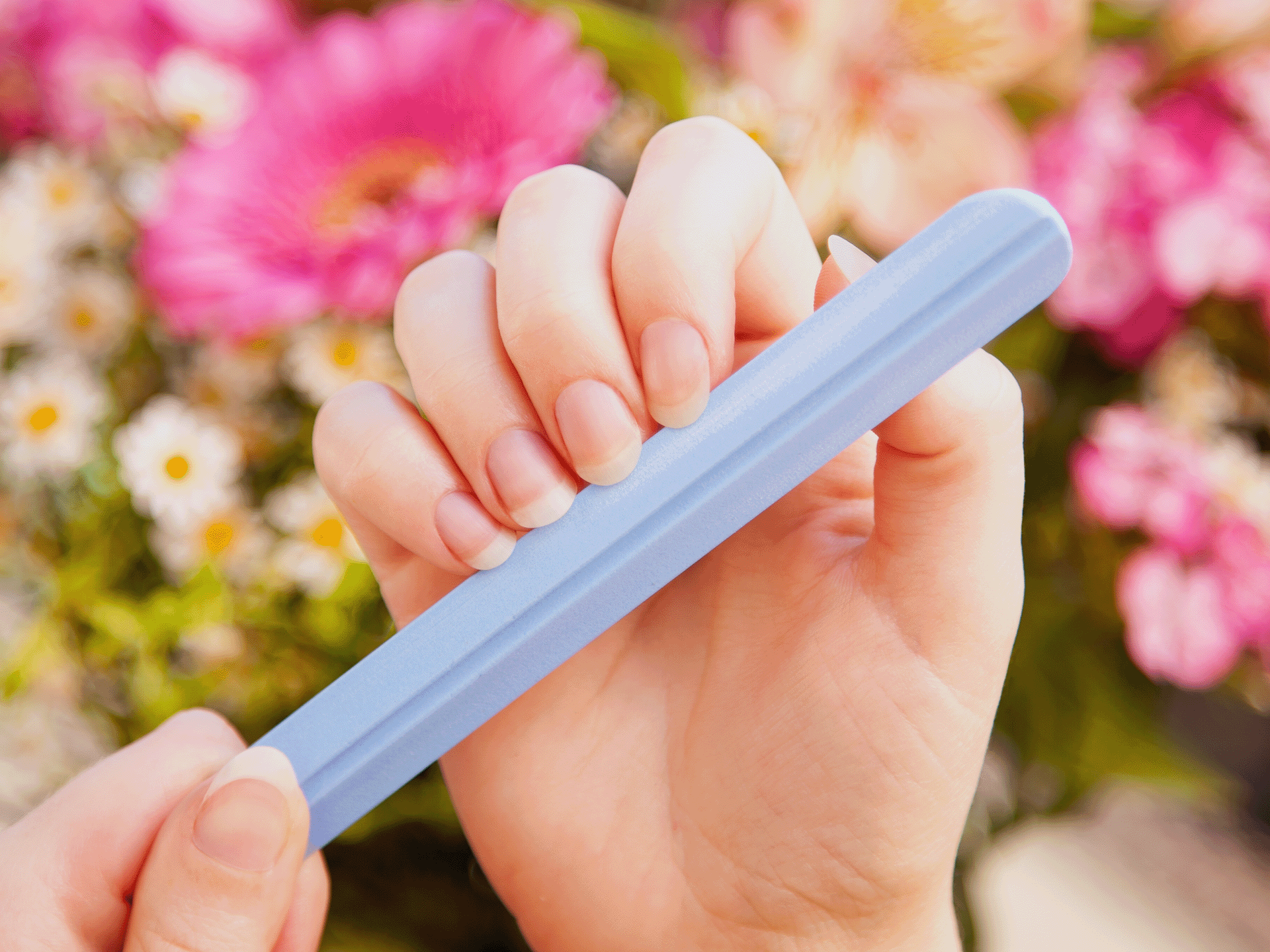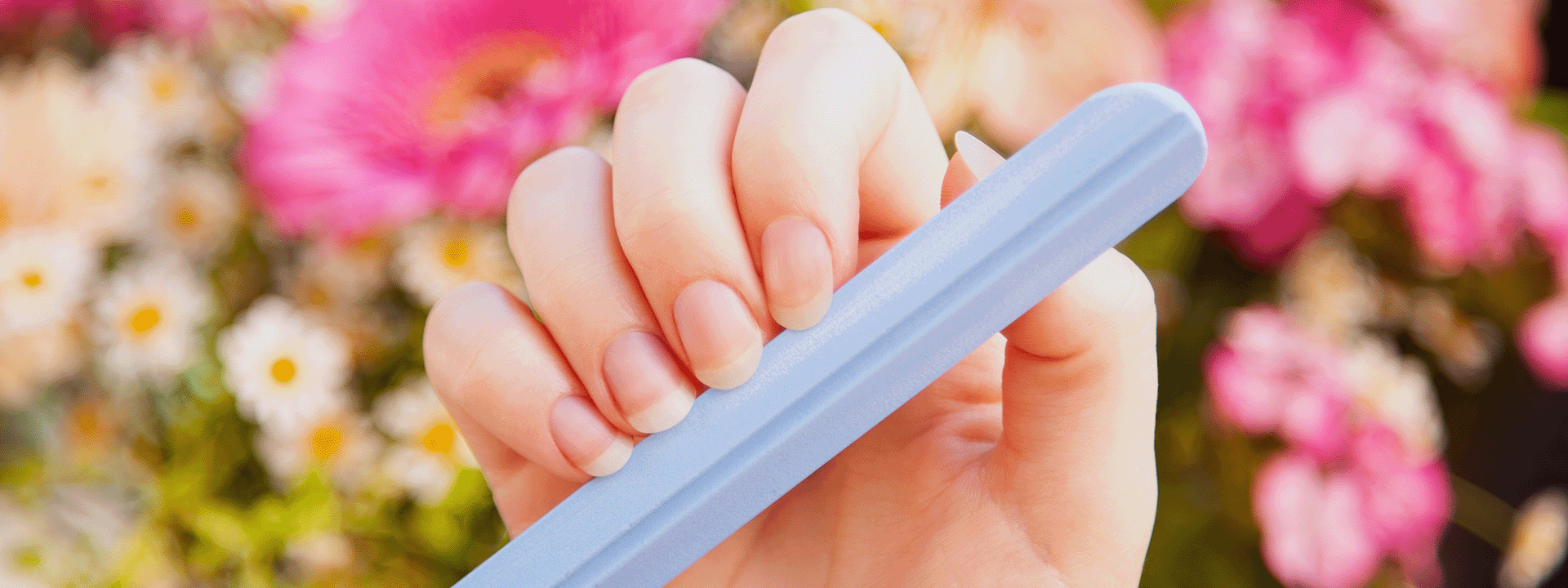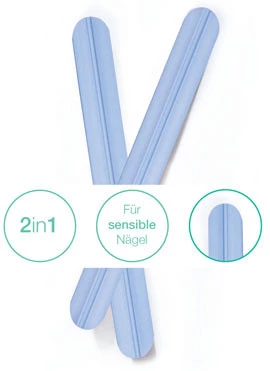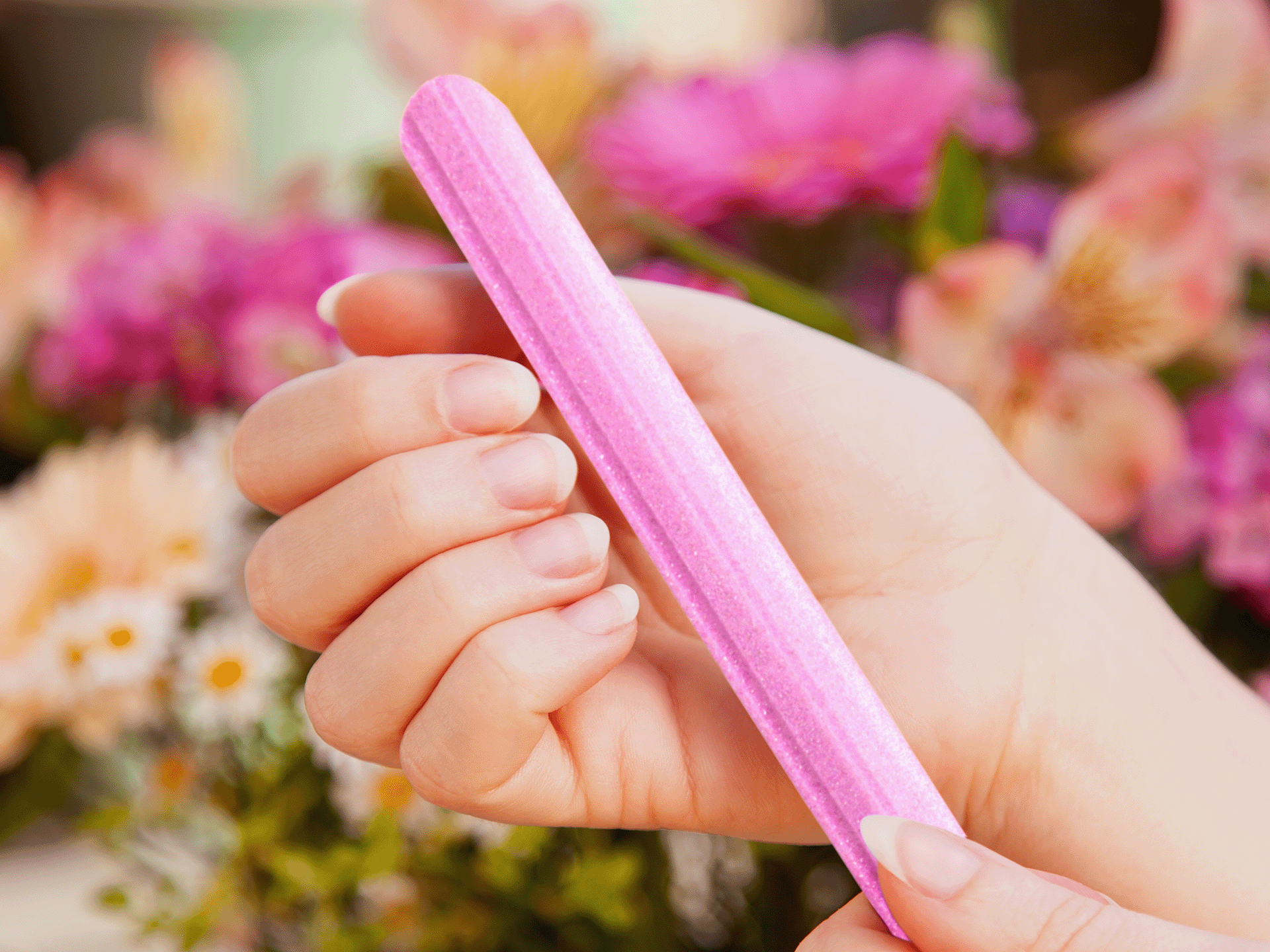

Nail Files
IOXIO® ceramic nail files
Precision and durability for perfect nails
Developed together with medical hand and foot care professionals, IOXIO® ceramic nail files offer precision and gentle care. Our files combine finely tuned grits and integrated guide grooves to ensure professional nail care. With additional functions such as a nail cleaner and cuticle pusher, they are perfect for a gentle and thorough manicure.

IOXIO® nail files
Advantages of ceramic nail files
Durable and smooth
Thin edges and guide grooves: Ceramic files have thin edges, which enables gentle use even with short nails. Guide grooves ensure precise filing.
High-quality grit: The file particles are embedded in the raw material, which ensures a fine, even grit for gentle filing.
Durable and washable: IOXIO® ceramic files are not coated, so they are durable and easy to wash off without losing their filing effect.
IOXIO® ceramic nail file
Advantages of the guide grooves
Precise and safe use
Advantage of the guide grooves on ceramic nail files
The lateral guide grooves on ceramic nail files provide additional support for the nails on the file surface. This enables a more precise and safer application, especially for quick manicures. For older people, these grooves make nail care considerably easier, as they prevent the nails from slipping and thus simplify handling.


IOXIO® Triple Pro File
Three filing surfaces
Perfect your nail care
Features:
Three filing surfaces: Coarse-grained side for precise shortening, fine-grained side for gentle smoothing and extra-fine side for sealing.
Burnt-in grit: Ensures a fine and gentle filing effect.
Integrated guide groove: Makes shaping and styling nails easier.
Advantages:
Durable: High-quality ceramic for long-lasting use.
Gentle on the nails: Smoothes and closes nails without cracking or splitting.
Hygienic: Easy cleaning reduces the build-up of bacteria.
Ideal for gentle and professional nail care.
Nail File FAQ & Know How
Nail files can be made of sandpaper, glass, metal or ceramic. IOXIO® ceramic files are made of sintered aluminum oxide ceramic which is provided with corundum.
Nail files made of sandpaper, glass or metal usually have 1 to 2 different grinding surfaces. Ceramic files consist of different grinding sides, we achieve this by using different proportions of corundum. A blast furnace fuses corundum and aluminum oxide ceramic into one unit. The resulting surface is closed and particularly abrasive due to the corundum. The unique grinding effect ensures a smooth result.
Our ceramic files are designed for maximum application possibilities, thus avoiding the use of different products and producing a high quality long lasting product. We achieve this by making our IOXIO® nail files have different file sides, a guide groove and thin edges. This is where we differentiate ourselves from inexpensive ceramic files. These are usually pressed, have only a simple shape and are not provided with additional corundum. IOXIO® ceramic files are characterized by easy handling.
A file is best suited for gently shaping your nails. Fine-grained ceramic files are ideal for gentle shortening. Avoid coarse files made of steel, as the risk of splintering increases.
To prevent your nails from splintering, always work from one side towards the center of the nail. Guide the file in long movements straight over the edge of the nail.
If you cut your fingernails with scissors, they can splinter and break off more easily. Experts advise against this. If you still want to shorten your nails as quickly as possible, use nail clippers or special nail nippers. Since cutting or clipping often results in uneven edges, file them off afterwards.
After use, ceramic nail files can be cleaned under running water. The hygienic product is durable and suitable for diabetics as well.
The grit for nail files 180 and 360. For sensitive nails, which are especially soft and prone to nail splitting use a high-quality file with fine grit. A coarse grit will harm sensitive fingernails. There are ceramic nail files that have three different grits.
Our contribution to sustainability: The Triple PROfile and the Sensi File are a long-lasting replacement for sandpaper files. And they are not only good for the environment due to their long service life: We have deliberately not used plastic for these two products. Thus, the nail files can be heated strongly without any problems to be hygienically clean afterwards.
